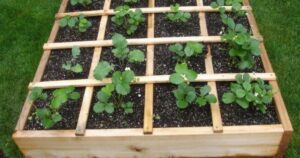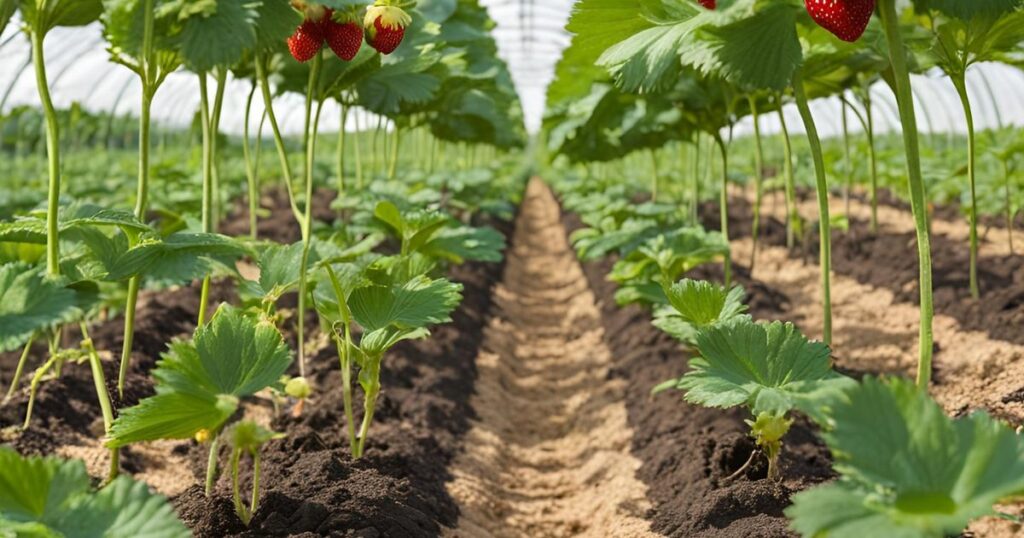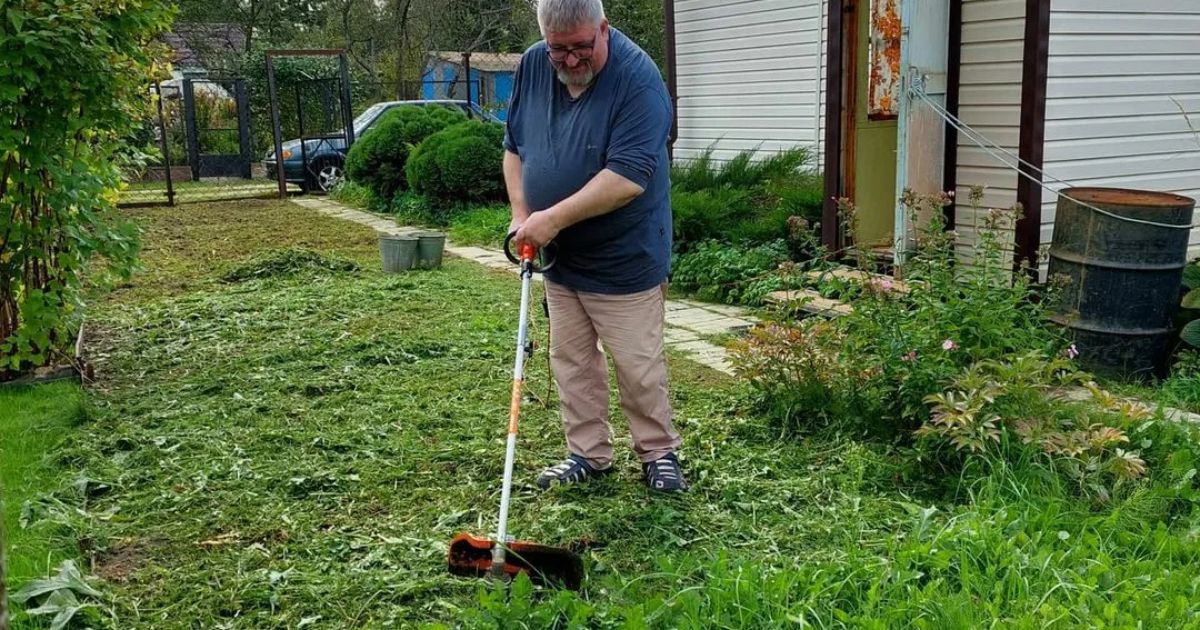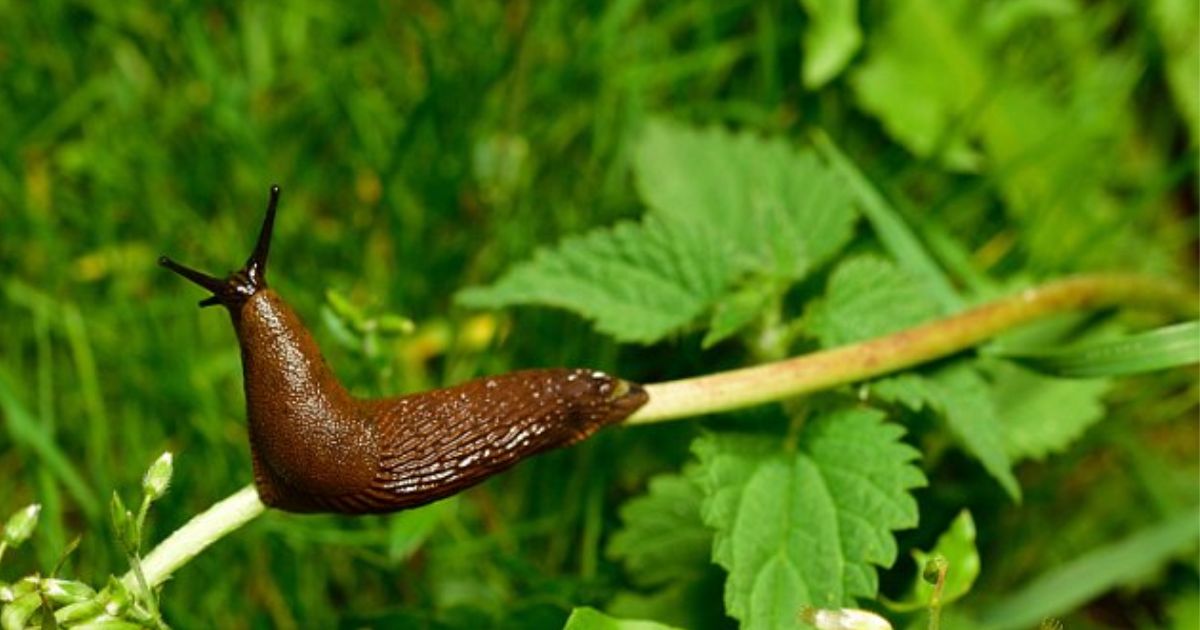It’s quite satisfying to grow strawberries in your garden but to ensure a bountiful harvest, it’s essential to understand how far apart to plant strawberry plants for optimal growth. Proper spacing is a critical factor that directly affects the health and yield of your strawberry plants. Giving each plant enough room can prevent overcrowding, enhance airflow, and lower the possibility of diseases like powdery mildew, all while encouraging larger, sweeter fruit.
Whether planting June-bearing, everbearing, or day-neutral varieties, knowing how far apart to plant strawberry plants can make a significant difference in your crop’s success. In this guide, we’ll walk you through the ideal spacing for different types of strawberry plants, explain why spacing matters, and share expert tips on how to maintain a healthy strawberry patch for years to come.
Why Proper Spacing Is Crucial for Strawberry Plants
Proper spacing for strawberry plants is essential when planting strawberry plants since it has a big impact on their overall health and productivity. Crowded plants can struggle to thrive, while well-spaced plants are more likely to produce larger, healthier fruits. Let’s explore the three key reasons why proper spacing is crucial for strawberry plants: preventing overcrowding, ensuring adequate air circulation, and boosting yield.
Preventing Overcrowding
Overcrowded strawberry plants often compete for essential resources like nutrients, sunlight, and water. When planted too closely, they must fight for the same limited supply, which can lead to stunted growth and weaker plants. Strawberry plants need adequate access to sunlight for photosynthesis, a process that directly affects their ability to produce energy and grow fruit. Similarly, when plants are cramped together, their roots compete for water and nutrients, often resulting in less vigorous plants that are unable to produce large, juicy strawberries. Proper strawberry spacing allows each plant to access the resources it needs, ensuring that they grow strong and healthy.
Air Circulation and Disease Prevention
Proper strawberry spacing between strawberry plants helps improve air circulation, which is vital in preventing diseases like powdery mildew, root rot, and other fungal infections. When plants are too close together, moisture can become trapped around the foliage, creating the perfect environment for mold and mildew to thrive. Good airflow reduces the humidity levels around the plants and allows leaves to dry more quickly after rainfall or watering. This decrease in excess moisture significantly lowers the chances of fungal infections, helping your strawberry plants stay disease-free throughout the growing season.
Increased Yield and Bigger Fruits
Strawberry plants that are given enough space to spread out are more likely to produce larger, healthier fruit. When plants are well-spaced, they have more room for their roots to grow and absorb the necessary nutrients from the soil. This leads to more robust plants that can focus their energy on developing bigger, juicier strawberries. Additionally, well-spaced plants experience less competition, allowing them to allocate more resources toward fruit production rather than merely surviving. As a result, you’ll enjoy a higher yield of strawberries with improved quality.
Ensuring that your strawberry plants are properly spaced will create the ideal conditions for healthy growth, disease resistance, and a plentiful harvest of delicious strawberries.
General Guidelines: How Close to Plant Strawberries In Raised Bed

Proper spacing is essential for growing healthy, productive spacing for strawberry plants. Whether growing June-bearing, everbearing, or day-neutral varieties, giving your plants the right amount of space ensures they receive enough nutrients, sunlight, and air circulation for optimal growth. Below are general guidelines for how far apart to plant strawberry plants based on the variety and growing method.
Row Spacing
The distance between rows is crucial in strawberry planting distance, as it impacts air circulation, ease of harvesting, and room for runners to spread.
- June-Bearing Strawberries: These plants yield a single, substantial crop in early summer and tend to spread via runners. To accommodate their growth habit, it’s recommended to space rows 12 to 18 inches apart. This distance gives the runners room to establish new plants while maintaining good airflow and ease of access for maintenance and harvesting.
- Everbearing and Day-Neutral Strawberries: These varieties produce fruit throughout the growing season but have fewer runners than June-bearing plants. Because they spread less, you can plant rows closer together, with 6 to 8 inches between rows. This closer spacing works well for maximizing yields in smaller garden spaces.
Plant Spacing Within Rows
The spacing between plants in the same row is just as important for ensuring each plant has enough room to thrive. Proper plant spacing for strawberries helps prevent overcrowding, which can lead to competition for nutrients and water.
- For June-bearing strawberries, it’s best to space plants 18 to 24 inches apart within each row. This spacing allows room for the runners to grow and establish new plants without overcrowding and helps the plants get enough sunlight, water, and nutrients.
- For everbearing and day-neutral strawberries, you can space plants a little closer at 12 to 18 inches apart within rows. Since these varieties produce fewer runners, they don’t need as much room to spread out. This spacing encourages healthy fruit production and simplifies plant maintenance.
Spacing for Container Growing
If you’re growing strawberries in containers or raised beds, spacing can be slightly adjusted to fit your growing environment. Containers and raised beds offer a more controlled environment but may limit root expansion.
- In raised beds, space plants 12 to 18 inches apart in all directions. Since raised beds typically have better drainage and nutrient retention, strawberries can thrive with slightly closer spacing than in traditional garden beds.
- For container growing, choosing a pot large enough to accommodate each plant is important. For one strawberry plant, use a container with a minimum diameter of 12 inches. This guarantees adequate space for the plant’s roots to grow and to absorb nutrients. If you’re planting multiple plants in a large container or grow bag, space them at least 10 to 12 inches apart.
Following these general spacing guidelines will help create an ideal environment for your strawberry planting distance, ensuring they grow strong, healthy, and productive throughout the season.
Factors Affecting Strawberry Plant Spacing
The spacing of your plant spacing for strawberries is crucial in ensuring their healthy growth and maximizing yields. Several factors come into play when deciding how far apart to plant strawberries, including the type of strawberry plant, garden layout, available space, and soil quality. Let’s take a closer look at each of these factors.
Type of Strawberry Plant
Different strawberry varieties have unique growth habits that affect how much space they require. The type of strawberry plant spacing you’re growing will largely dictate the spacing between plants.
- June-Bearing Strawberries: These plants produce a single, large crop per year and spread prolifically through runners. Because of their extensive runner growth, June-bearing strawberries need more space to thrive. Generally, these plants should be spaced 18 to 24 inches apart within rows, with rows spaced about 12 to 18 inches apart. The extra room allows the runners to root and form new plants without overcrowding.
- Everbearing and Day-Neutral Strawberries: Unlike June-bearing varieties, everbearing and day-neutral strawberries produce multiple smaller crops throughout the growing season. These plants generate fewer runners, which means they require less room to spread. As a result, they can be planted closer together, with 12 to 18 inches between plants within each row and 6 to 8 inches between rows. This spacing is ideal for smaller garden spaces or container gardening.
Garden Layout and Available Space
The overall layout of your garden and the amount of space available will also influence the spacing of your strawberry plants. If you’re working with a larger garden, traditional row planting with wider spacing is ideal for June-bearing varieties. However, if space is limited or you’re growing in pots or raised beds, you might have to adjust the spacing to make the most of your growing area.
- Traditional Gardens: For large, open gardens, you can follow standard spacing guidelines of 12 to 24 inches apart for strawberry plants, depending on the variety. This provides ample room for runners and allows easy maintenance access.
- Raised Beds: In raised beds, you can plant strawberries a little closer, generally 12 to 18 inches apart in all directions, since the confined space usually offers better soil conditions and drainage.
- Containers: When growing strawberries in containers, spacing depends on the size of the container. A strawberry plant should be placed in a pot 12 inches in diameter. Plants should be spaced 10–12 inches apart for larger containers or grow bags to ensure enough room for root growth.
Soil Quality
Soil health is a critical factor that can impact plant spacing. Healthy, nutrient-rich soil may allow for slightly closer spacing since the plants can access sufficient nutrients and water even when planted more densely. Conversely, in poor or sandy soils, plants may need more room to ensure they receive adequate resources.
- Healthy Soil: In gardens with rich, well-draining soil, strawberry plants may thrive with closer spacing. For example, you can plant June-bearing varieties closer to 18 inches apart within rows instead of 24 inches. Well-maintained soil regularly amended with compost or organic matter can support healthy growth even in tighter spaces.
- Poor Soil: If the soil in your garden is less fertile or drains poorly, it’s better to increase the spacing between plants. This ensures each strawberry plant has enough access to nutrients and room for root expansion. In such cases, stick to the wider end of the spacing guidelines (e.g., 24 inches apart for June-bearing plants).
By considering the type of strawberry plant, garden layout, available space, and soil quality, you can determine the best spacing for your strawberry plants to ensure they grow strong, resist disease, and produce abundant fruit.
Planting Methods Based on Spacing Needs

When growing strawberries, choosing the right planting method is essential for maximizing space and ensuring healthy plant growth. The method you select largely depends on the variety of strawberries you’re cultivating, as each type has unique spacing needs. Two common planting methods include the matted row system and the hill system. Each method offers different benefits depending on whether you’re growing June-bearing or day-neutral and everbearing strawberries.
Matted Row System
The matted row system is the preferred planting method for June-bearing strawberry varieties, which produce a single, large crop per year and send out numerous runners. This system allows the runners to root and establish new plants, creating a “mat” of strawberries. Here’s how the matted row system works:
- Row Spacing: When using the matted row system, leaving 18 to 24 inches between rows is important to allow runners to spread and root without overcrowding. Wider row spacing also ensures better air circulation, reducing the risk of disease and allowing easier access for harvesting.
- Within-Row Spacing: Individual plants should be spaced 18 to 24 inches apart within the row. The runners will fill the space between plants as they grow, eventually creating a dense, productive strawberry bed.
- Benefits: This method is ideal for June-bearing strawberries because it encourages maximum fruit production from the runners. It also simplifies garden maintenance since the spreading runners naturally establish new plants, creating a self-sustaining bed.
Hill System
The hill system is best suited for day-neutral and everbearing strawberry varieties, which produce fruit throughout the growing season but generate fewer runners than June-bearing types. Unlike the matted row system, the hill system discourages runner production by regularly removing them, allowing the plants to focus their energy on fruiting. Here’s how the hill system works:
- Plant Spacing: In the hill system, strawberry plants are spaced closer together, typically 12 to 18 inches apart within rows and 6 to 12 inches between rows. This closer spacing is ideal for everbearing and day-neutral plants, which don’t need as much room to spread due to their limited runner production.
- Mounds or Hills: Plants are typically arranged in mounds or raised beds, which improve drainage and ensure that the plants receive adequate sunlight. By regularly removing the runners, the plants concentrate on producing larger, more frequent harvests throughout the season.
- Benefits: The hill system is advantageous for everbearing and day-neutral varieties because it allows the plants to focus on fruit production rather than sending out runners. The closer spacing maximizes available space, making it a great choice for smaller gardens or raised beds where space is limited.
In summary, the planting method you choose for your strawberries should align with the variety you’re growing. The matted row system works best for June-bearing strawberries that produce runners. In contrast, the hill system is ideal for everbearing and day-neutral varieties that need less space and more focus on continuous fruit production. When used correctly, both methods will help you achieve a thriving, fruitful strawberry patch.
Tips for Maintaining Proper Spacing During Growth
Maintaining the correct spacing between strawberry plants throughout their growth is crucial to ensuring they remain healthy and productive. Plants can quickly become overcrowded without proper maintenance, leading to competition for nutrients and water and increased disease risk. Two key practices that help maintain optimal spacing are pruning runners and using mulch effectively. Here’s how to manage these tasks to keep your strawberry plants thriving.
Pruning Runners
Strawberry runners are long stems that extend from the main plant and eventually produce new plants when they take root. While runners are beneficial in some planting systems, like the matted row system for June-bearing strawberries, they can lead to overcrowding if not properly managed, especially for day-neutral and everbearing varieties.
- When to Prune Runners: It’s important to regularly check your strawberry plants for runners, especially during the growing season. For June-bearing varieties, you may allow a few runners to root in designated spaces to form new plants. However, for day-neutral and everbearing varieties, runners should be pruned as they appear to prevent overcrowding and maintain the plant’s energy for fruit production.
- How to Prune Runners: Prune runners when they are still small and before they have a chance to take root. Use clean garden scissors or pruning shears to snip the runner as close to the main plant as possible. By keeping the runners in check, you ensure that the plants have enough space to grow, minimizing risk of nutrient competition. Additionally, pruning helps direct the plant’s energy toward producing larger, healthier fruit and How to Prevent Tomato Catfacing.
Mulching and Weeding
Mulching and weeding play vital roles in maintaining the proper spacing of strawberry plants by suppressing weeds and retaining soil moisture. By reducing weed competition and preserving the health of the soil, your strawberry plants can grow without interference, making full use of the space provided.
- Using Mulch: Applying mulch around strawberry plants offers several benefits, particularly in maintaining plant spacing. Straw, wood chips, or pine needles are excellent mulching materials that help retain soil moisture, prevent weed growth, and protect the plants from temperature fluctuations. Mulch creates a barrier that stops weeds from invading the space between plants, ensuring strawberries have room to spread and develop without interference.
- Mulching Tips: When mulching, apply a layer of add two to three inches of mulch to each plant, leaving some space around the plant’s crown to prevent rot. As the season progresses, check the mulch and add more, if necessary, to maintain its thickness and effectiveness. In cooler months, mulch can also help insulate the plants, protecting them from frost damage.
- Regular Weeding: Even with mulch, some weeds may still find their way into your strawberry patch. Removing weeds regularly, especially those growing between plants, is essential to prevent them from competing for space, water, and nutrients. Hand-pulling weeds is often the best method, ensuring you don’t disturb the strawberry plants or their roots.
By pruning runners and using mulch to control weeds and preserve soil health, you can maintain the optimal spacing of your spacing of strawberry plants throughout the growing season. This ensures that each plant has ample room to grow, allowing for better airflow, disease prevention, and higher yields of delicious, healthy strawberries how many strawberry plants per square foot?
Conclusion
Understanding how far apart to plant strawberry plants for optimal growth is essential for cultivating a healthy and productive strawberry patch. Whether you choose the matted row system for June-bearing varieties or the hill system for everbearing and day-neutral types, proper spacing ensures that your plants receive adequate nutrients, sunlight, and air circulation. By adhering to recommended spacing guidelines—such as 18 to 24 inches between rows for June-bearers and 6 to 12 inches for day-neutrals—you can significantly enhance the growth and yield of your strawberry plants.
Moreover, regular maintenance practices such as pruning runners and applying mulch will help maintain ideal spacing throughout the growing season. By taking these steps, you’ll promote healthy plant development and enjoy a bountiful harvest of delicious strawberries. With the right knowledge and care, you can create a thriving strawberry garden that will provide sweet rewards for years.
FAQs:
How far apart do you plant strawberries?
For June-bearing strawberries, it is recommended that the plants be spaced 18 to 24 inches apart within the row and maintained 12 to 18 inches between rows. For everbearing and day-neutral varieties, plants should be spaced 12 to 18 inches apart within rows, with 6 to 12 inches between rows.
What happens if I plant strawberries too close together?
Overcrowding can lead to competition among the plants for nutrients, sunlight, and water. This can result in smaller fruit, stunted growth, and an increased chance of illness as a result of inadequate airflow.
Should I prune strawberry runners?
Yes, pruning runners is essential to maintain proper spacing and plant health. For June-bearing varieties, allow some runners to root but prune excess runners for day-neutral and everbearing varieties to prevent overcrowding.
Is mulching necessary for strawberry plants?
While not mandatory, mulching is highly beneficial. It controls soil temperature, discourages weed growth, and aids in the retention of soil moisture, creating a healthier environment for your strawberry plants to thrive.





